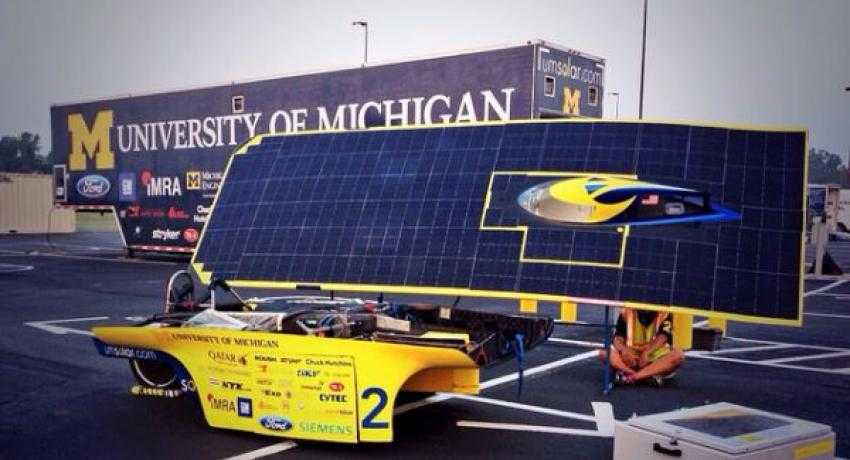Solar car race driving innovation
There’s been surprisingly little press about the eight solar-powered cars driving from Austin, Texas to Minneapolis. But the cars and their collegiate creators are making history.
Twenty teams of college students from around the world spent two years building advanced solar-powered vehicles and then tested them on courses in Texas earlier this month.
The best among them set out on a long north-south journey July 21 in the 21st American Solar Challenge, which pushes solar vehicles created by teams of college students to race across country and prove the road-worthiness of a car powered by nothing but the sun. The competition takes place every two years.
The cars have a space-age quality to them and are designed to win a competition. They’re small, aerodynamic, lightweight and efficient. Nearly all of them just have room inside for a single driver.
The University of Michigan was the first car to pull into the rest stop in Overland Park, Kansas Thursday. The team has taken first place in the last several American Solar Challenge road races and is, so far, leading the pack this year.
Quantum is Michigan’s 11th solar car. With the driver, it weighs only about 320 pounds.
Giving teams seven days to travel a distance the family minivan might do in two could give observers the impression that the solar cars are fragile and inefficient.
However, using no more energy than a hair dryer, Quantum can travel 105 miles per hour.
The other cars in the race, including those from the University of Minnesota Iowa State University, Oregon State, Poly Montreal and Principia are similarly capable.
The University of Minnesota’s car, the Centaurus III, traveled about 50 miles per hour for the better part of the day Thursday, according to the team’s blog.
These cars aren’t just quirky experiments. They have grown increasingly sophisticated and capable over the decades since the competition was founded. As solar panels have become more efficient and accessible, so too have solar cars.
Today, race organizers say, these are demonstrations of what the automotive industry could be driving toward.
In fact, in the same week that university students embarked on a solar-powered cross country journey in the US, the Australian Sunswift eVe solar-powered car broke a 26-year-old land speed record for electric vehicles.
Pairing endurance with speed, the solar-powered vehicle averaged 87 miles per hour on a 310-mile course.
“There are many solar cars out there with a long range, and many other solar cars capable of even higher speeds,” Rob Ireland, business team leader at Sunswift, told International Business Times. “However, we’re trying to do something ground-breaking and overcome both.”
The research and work university teams do in preparation for the American Solar Challenge informs work on real solar-powered cars, which could be the real zero-emission, zero fuel solution for the future of transportation.




